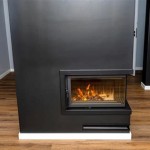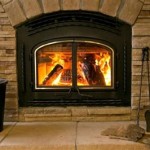What Size Electric Fireplace Insert Do I Need?
Selecting the correct size electric fireplace insert is crucial for achieving optimal heating efficiency and visual appeal within a fireplace setting. An undersized insert may struggle to adequately heat the intended space, while an oversized unit could overwhelm the existing firebox and potentially detract from the aesthetic. Determining the appropriate size requires careful consideration of several factors, including the dimensions of the existing fireplace opening, the desired heating output, and the overall room size.
The purpose of an electric fireplace insert is twofold: to provide supplemental heat and to replicate the ambiance of a traditional wood-burning fireplace. Correct sizing ensures that both of these objectives are met effectively. Choosing the right size also contributes to the longevity of the unit, as it will not be forced to operate at maximum capacity constantly, which can lead to premature wear and tear.
Measuring the Existing Fireplace Opening
The initial step in determining the appropriate size for an electric fireplace insert involves accurately measuring the existing fireplace opening. These measurements will dictate the physical dimensions of the insert that can be accommodated. Three key measurements are required: width, height, and depth.
Width is the horizontal distance across the widest part of the firebox opening. Height is the vertical distance from the hearth to the top of the firebox opening. Depth is the distance from the front of the firebox to the back. These measurements should be taken in inches and recorded accurately. It is advisable to measure at multiple points to account for any irregularities in the firebox construction. For instance, the width at the top of the opening might differ slightly from the width at the bottom.
When measuring, it is essential to consider any obstructions or protrusions within the firebox. These could include brickwork, dampers, or other structural elements. The insert must fit comfortably within the firebox without being obstructed by these features. If obstructions are present, the measurements should be adjusted accordingly to reflect the usable space.
After obtaining the measurements, compare them against the dimensions of available electric fireplace inserts. The insert should be slightly smaller than the firebox opening to allow for proper ventilation and ease of installation. As a general guideline, leave at least one to two inches of clearance on all sides of the insert. This clearance ensures that air can circulate freely around the unit, preventing overheating and promoting efficient heat distribution.
It is crucial to consult the manufacturer's specifications for each insert model being considered. These specifications will provide detailed dimensions, including the overall width, height, and depth of the unit. Some manufacturers may also provide recommended firebox opening dimensions to ensure a proper fit. Adhering to these recommendations will minimize the risk of selecting an insert that is too large or too small for the existing fireplace.
Calculating Heating Needs Based on Room Size
Beyond the physical dimensions of the fireplace opening, the heating requirements of the room are a critical factor in determining the appropriate insert size. Electric fireplace inserts are typically rated in British Thermal Units (BTUs), which indicates the amount of heat they can produce per hour. A higher BTU rating signifies a greater heating capacity.
To estimate the required BTU output, consider the square footage of the room to be heated. As a general rule of thumb, 10 BTUs are needed to heat one square foot of space. For example, a 400-square-foot room would require an insert with a BTU rating of approximately 4,000. This is a basic guideline, but several other factors can influence the actual heating needs.
Insulation plays a significant role in determining the heating requirements. A well-insulated room will retain heat more effectively, reducing the need for a high-BTU insert. Conversely, a poorly insulated room will lose heat rapidly, necessitating a more powerful unit. Consider the age and construction of the building, as older homes often have less effective insulation than newer ones. Windows and doors are also significant sources of heat loss. Single-pane windows, in particular, can contribute to drafts and heat leakage.
Climate is another critical consideration. In colder climates, a higher BTU rating will be necessary to maintain a comfortable temperature. Homes in warmer climates may require less supplemental heat, allowing for a smaller, lower-BTU insert. Account for the typical winter temperatures in the region when estimating heating needs.
Ceiling height can also impact the heating requirements. Rooms with high ceilings have a larger volume of air to heat, necessitating a higher BTU output. Conversely, rooms with low ceilings will require less heating capacity. As a rough estimate, increase the BTU requirement by 10% for every foot that the ceiling height exceeds eight feet.
After considering these factors, adjust the initial BTU estimate accordingly. If the room is poorly insulated, located in a cold climate, or has high ceilings, increase the BTU requirement. If the room is well-insulated, located in a warm climate, or has low ceilings, decrease the BTU requirement.
It's better to slightly overestimate the heating needs than to underestimate them. An insert with a higher BTU rating can always be operated at a lower setting, providing flexibility and ensuring adequate heating capacity even during the coldest periods. However, an undersized insert will struggle to adequately heat the space, leading to discomfort and potentially overworking the unit.
Many electric fireplace inserts have adjustable thermostat controls, allowing the user to regulate the heat output. This feature provides further control over the heating process, enabling the unit to be adjusted to suit the specific needs of the room and the preferences of the occupants.
Considering Aesthetic Preferences and Features
While proper sizing based on dimensions and heating needs is paramount, aesthetic preferences and desired features also play a crucial role in selecting the ideal electric fireplace insert. Inserts are available in a wide range of styles, finishes, and features, allowing for customization to match the existing décor and personal tastes.
The visual style of the insert should complement the existing fireplace surround and the overall room design. Options range from traditional designs with realistic log sets to contemporary styles with sleek, minimalist aesthetics. Consider the color and material of the fireplace surround, as well as the other furnishings in the room. The insert should blend seamlessly with the existing décor, creating a cohesive and visually appealing focal point.
Flame effects are a significant aesthetic feature of electric fireplace inserts. Modern inserts offer a variety of flame effects, ranging from subtle, flickering flames to vibrant, multi-colored displays. Some models allow for customization of the flame color, brightness, and speed, providing a personalized visual experience. Consider the desired level of realism and the overall ambiance to be created when selecting an insert based on its flame effects.
Log sets are another important aesthetic consideration. Traditional inserts typically feature log sets that mimic the appearance of real wood. These log sets can be made from various materials, including molded resin and hand-painted ceramic. The level of detail and realism can vary significantly between models. Consider the desired level of authenticity when selecting an insert based on its log set. Some models offer alternative media options, such as glass embers or acrylic crystals, for a more contemporary look.
Remote control functionality is a valuable feature that enhances convenience and ease of use. A remote control allows the user to adjust the flame effects, heat settings, and brightness levels from a distance. This feature is particularly useful for individuals with mobility issues or for controlling the fireplace from across the room.
Built-in timers are another convenient feature that can help to conserve energy and prevent overheating. A timer allows the user to set the insert to automatically turn off after a specified period. This feature is particularly useful for those who want to enjoy the ambiance of the fireplace without having to remember to manually turn it off.
Sound effects can enhance the realism of the electric fireplace experience. Some inserts feature built-in sound effects that mimic the crackling and popping of a real wood fire. These sound effects can be adjusted to suit personal preferences and can add an extra layer of authenticity to the ambiance.
The size and location of the viewing area are also important considerations. The viewing area is the portion of the insert that displays the flame effects and log set. A larger viewing area will provide a more immersive visual experience. Consider the viewing angle and distance from which the fireplace will be viewed when selecting an insert based on its viewing area.
Finally, consider the overall quality and durability of the insert. Choose a model from a reputable manufacturer that is known for producing high-quality products. Read reviews and compare specifications to ensure that the insert is built to last and will provide reliable performance for years to come.

The Proper Way To Measure Dimensions Of A Fireplace

ᑕ❶ᑐ What Size Electric Fireplace Is Best

How To Select A Fireplace Insert The Home Depot

ᑕ❶ᑐ What Size Electric Fireplace Is Best

Clihome Flame 36 In Wall Mounted Automatic Constant Temperature Electric Fireplace Insert Smd Ef33wz The Home Depot

How To Select A Fireplace Insert The Home Depot

ᑕ❶ᑐ What Size Of Fireplace Is Perfect For Me Magikflame

Recessed Or Wall Mount Electric Fireplace Installations Explained Touchstone Home S Inc

ᑕ❶ᑐ Your Electric Fireplace Insert How To Measure It

Fireplace Insert Guide Fireplaces Direct Learning Center








